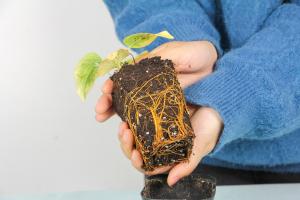How to Transplant Large Tomato Plants
Introduction
Many gardeners find that transplanting large tomato plants can be a challenge, but with the right techniques and tools, it can be done successfully. In this article, we will provide you with a step-by-step guide on how to transplant large tomato plants.
Gathering Necessary Tools and Supplies
Before starting the transplanting process, it is important to gather all the necessary tools and supplies in one place. These include garden gloves, a spade or shovel, a watering can or a hose, a bucket or basket for carrying plants, and some compost or fertilizer.
Prepping the New Growing Area
The new growing area should be prepared well in advance of the actual transplanting process. The soil should be loose and well-drained, and fertilizer or compost should be added to enrich the soil. Make sure to remove any debris or weeds from the area, and if necessary, create a raised bed to ensure proper drainage.
Preparing the Tomato Plants for Transplanting
Before transplanting, it is important to prepare the tomato plants to ensure that they can adapt to their new surroundings easily. This can be done by trimming off the lower leaves and branches of the plant, leaving only the uppermost leaves and stem. Additionally, gently water the plants before transplanting them, which will help to minimize shock once they are moved to their new location.
Transplanting the Tomato Plants
The actual transplanting process involves digging a hole or trench in the new growing area and carefully transferring the tomato plant to the new location. When digging the hole, make sure to make it about twice as wide and deep as the root ball of the tomato plant, and add some compost or fertilizer to the bottom of the hole. When moving the tomato plant, try to minimize any damage to the roots, and be extra careful not to twist or bend the stem of the plant. Gently pat the soil around the plant to ensure that it is firmly in place.
Caring for the Transplanted Tomato Plants
Once the tomato plants have been transplanted, it is important to take good care of them to ensure their healthy growth. This includes regularly watering the plants, especially during the first few days after transplantation. Additionally, fertilizing the plants every few weeks can help to promote healthy growth and strong roots. Make sure to remove any dead or diseased leaves or branches from the plants to prevent the spread of disease.
Conclusion
Transplanting large tomato plants may seem like a daunting task, but by following these simple steps, you can ensure a successful transplant and healthy plants that will thrive in their new location. Remember to take good care of the plants, and before you know it, you will have delicious, homegrown tomatoes to enjoy!

 how many times do yo...
how many times do yo... how many planted tre...
how many planted tre... how many pine trees ...
how many pine trees ... how many pecan trees...
how many pecan trees... how many plants comp...
how many plants comp... how many plants can ...
how many plants can ... how many plants and ...
how many plants and ... how many pepper plan...
how many pepper plan...
































